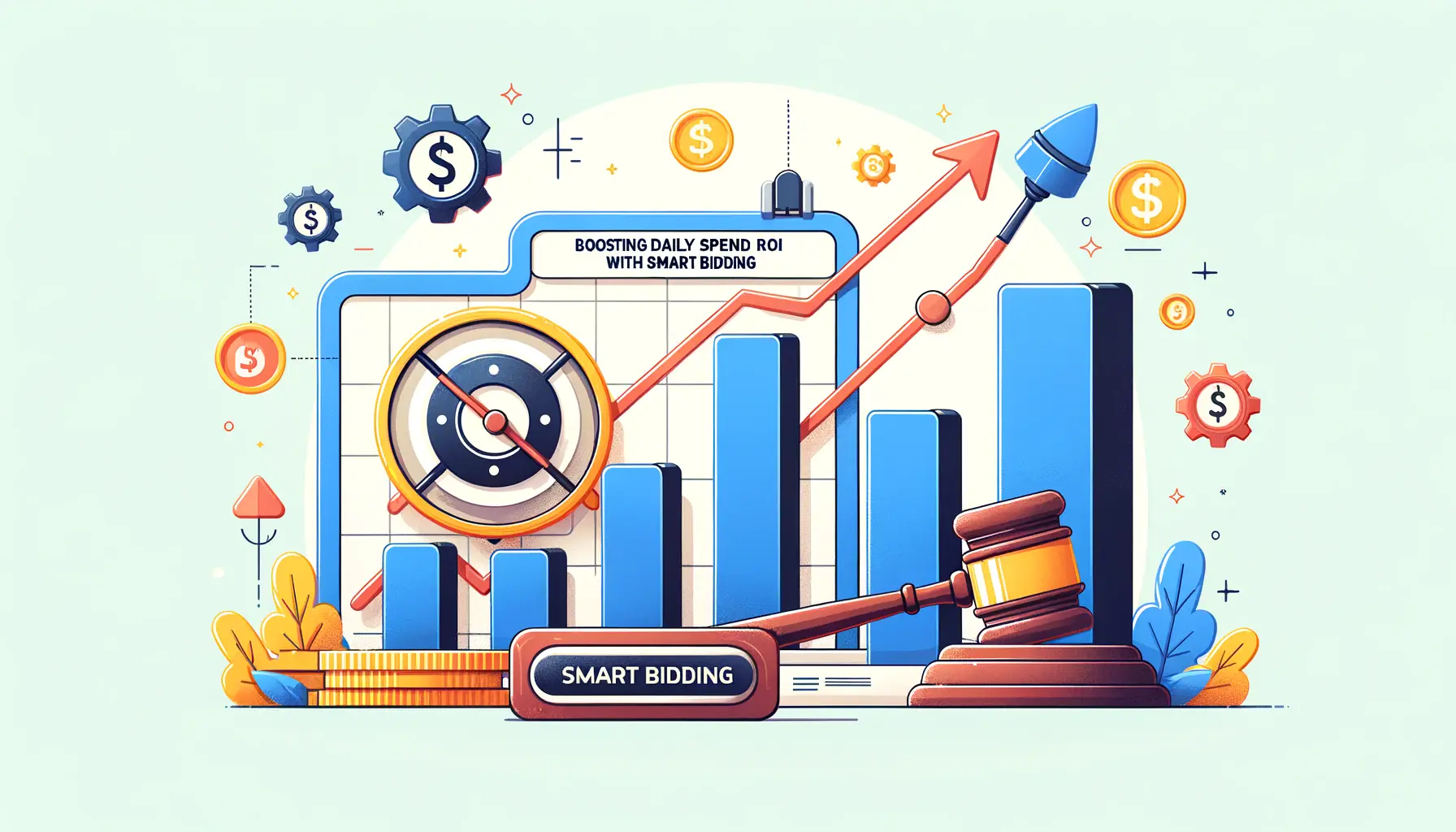Understanding the impact of content on a business’s bottom line has never been more crucial than in today’s digital age.
Content analytics stands at the forefront of this understanding, offering insights that go beyond mere page views or social media likes.
It delves into how content drives engagement, leads, and ultimately, return on investment (ROI).
This comprehensive approach to analyzing content performance not only helps businesses to refine their content strategy but also aligns it more closely with their overall marketing goals.
In an era where content is king, the ability to measure its effectiveness accurately is invaluable.
Content analytics provides a detailed look into which pieces of content are performing well and why, enabling marketers to replicate success across their content portfolio.
By focusing on content that delivers a high ROI, businesses can allocate their resources more effectively, ensuring that every piece of content they produce is an asset rather than an expense.
- Content Analytics
- Strategies for Content ROI
- Optimizing Content Distribution Channels
- Content Analytics into Strategy Development
- Engaging Your Audience with Interactive Content
- User-Generated Content for Authentic Engagement
- Future Trends in Content Analytics and ROI Measurement
- Empowering Your Content Strategy with Analytics for Sustainable ROI
- Content Analytics FAQ
Content Analytics
At its core, content analytics involves the collection and analysis of data related to content performance.
This can range from the number of views a blog post receives to the engagement rate of a social media campaign.
However, the true power of content analytics lies in its ability to link content performance with business outcomes.
By tracking metrics such as lead generation and conversion rates, businesses can gain a clear understanding of how their content contributes to their bottom line.
Content analytics tools play a pivotal role in this process, offering a range of features designed to measure and analyze content performance.
These tools can track user behavior, identify content trends, and provide actionable insights that help businesses optimize their content strategy.
With the right analytics in place, businesses can transform their content from a static asset into a dynamic tool for driving growth and profitability.
Key Metrics in Content Analytics
Several key metrics are essential for understanding content performance.
These include:
- Engagement Rate: Measures how actively involved the audience is with the content, through likes, shares, comments, and other interactions.
- Conversion Rate: Tracks the percentage of content viewers who take a desired action, such as signing up for a newsletter or making a purchase.
- Bounce Rate: Indicates the percentage of visitors who leave the site after viewing only one page, offering insights into content relevancy and user experience.
By monitoring these and other relevant metrics, businesses can gain a comprehensive view of their content’s performance.
This data-driven approach allows for continuous improvement of content strategy, ensuring that each piece of content is optimized for maximum impact.
Content analytics bridges the gap between content creation and business performance, providing the insights needed to drive ROI.
Strategies for Content ROI
Maximizing the return on investment from content requires more than just producing high-quality material; it necessitates a strategic approach tailored to your audience’s needs and preferences.
Implementing effective strategies for content creation and distribution can significantly enhance content ROI, turning potential viewers into loyal customers.
One of the first steps in this process is understanding your audience deeply.
This involves analyzing user data to identify their preferences, pain points, and content consumption habits.
Armed with this knowledge, businesses can create targeted content that resonates with their audience, increasing engagement and conversion rates.
Creating High-Quality, Relevant Content
Quality and relevance are the cornerstones of effective content.
High-quality content that addresses the needs and interests of your audience is more likely to engage viewers and encourage them to take action.
This means investing time in research and development to ensure that every piece of content, whether a blog post, video, or infographic, provides value to your audience.
Moreover, relevance cannot be overstated.
Content that is closely aligned with your audience’s interests and the current market trends is more likely to capture attention and drive engagement.
Keeping a pulse on industry news and leveraging content analytics to understand what works can help in producing content that hits the mark every time.
Leveraging SEO for Greater Visibility
Search engine optimization (SEO) is a critical component of any content strategy aimed at improving ROI.
By optimizing content for relevant keywords and following best SEO practices, businesses can increase their content’s visibility on search engine results pages (SERPs), attracting more organic traffic to their site.
This not only enhances the reach of your content but also contributes to higher conversion rates as more targeted leads are driven to your website.
SEO strategies should include keyword research to identify terms your audience is searching for, optimizing content and meta tags for these keywords, and building a network of backlinks to increase your site’s authority.
Regularly updating content and ensuring it provides value will also signal to search engines that your site is a relevant source of information, further boosting your SEO efforts.
Incorporating user feedback and content analytics data into your content creation process can lead to more engaging and effective content, driving up ROI.
Optimizing Content Distribution Channels
Creating outstanding content is only half the battle; the other half is ensuring it reaches your target audience through the right channels.
The distribution strategy plays a crucial role in maximizing content ROI, as it directly impacts visibility and engagement.
A multi-channel approach, tailored to where your audience spends their time, can significantly enhance content reach and effectiveness.
To optimize content distribution, it’s essential to identify the most effective channels for your specific audience.
This might include social media platforms, email marketing, blogs, or even third-party publications.
By diversifying your distribution efforts, you can extend your content’s reach and engage with your audience across different touchpoints.
Key Distribution Channels
- Social Media: Platforms like Facebook, Twitter, LinkedIn, and Instagram offer vast audiences and targeting options to ensure your content reaches the right viewers.
- Email Marketing: Directly engaging with your audience through personalized emails can drive traffic to your latest content and nurture leads through the sales funnel.
- Blogs and Websites: Your own platforms are crucial for hosting and sharing content, providing a central hub for your audience to access valuable resources.
- Content Syndication: Sharing your content on third-party sites can expand its reach and introduce your brand to new audiences.
Measuring Distribution Success
Tracking the performance of your distribution channels is vital for understanding their impact on content ROI.
Analyzing metrics such as traffic, engagement, and conversion rates from each channel allows you to refine your strategy and focus on the most effective platforms.
Tools like Google Analytics and social media analytics features can provide comprehensive insights into how your content is performing across different channels.
Additionally, A/B testing different distribution tactics and messages can help identify what resonates best with your audience.
This iterative approach ensures your distribution strategy remains aligned with audience preferences and market trends, maximizing the ROI of your content efforts.
Remember, the goal of optimizing distribution channels is not just to increase reach but to engage meaningfully with your audience, driving conversions and loyalty.
Content Analytics into Strategy Development
The integration of content analytics into the development of content strategy is a critical step for ensuring the effectiveness and ROI of your content marketing efforts.
By leveraging data-driven insights, businesses can make informed decisions that align their content with audience needs and preferences, ultimately driving better engagement and conversions.
Content analytics tools offer a wealth of information, from user engagement metrics to conversion data, that can inform every aspect of your content strategy.
This data not only highlights what types of content are performing well but also provides insights into how content can be optimized for better results.
Utilizing Analytics for Content Improvement
- Audience Insights: Understanding who your audience is and what they are interested in allows for the creation of more targeted and relevant content.
- Content Performance: Analyzing which pieces of content are most effective at driving engagement and conversions can help guide future content creation efforts.
- SEO Optimization: Content analytics can reveal how well your content is performing in search engines, informing SEO strategies to improve visibility and traffic.
- Conversion Tracking: By tracking how content contributes to conversions, businesses can better understand the ROI of their content marketing efforts.
Adapting Strategy Based on Analytics
With insights from content analytics, businesses can adapt their content strategy to focus on high-performing topics and formats, optimize distribution channels, and refine their messaging to better meet audience needs.
This may involve shifting resources to more effective types of content, experimenting with new content formats, or adjusting publication schedules to align with audience online behavior.
Moreover, continuous monitoring of content analytics allows for ongoing optimization of your content strategy.
By regularly reviewing analytics data, businesses can stay agile, quickly responding to changes in audience behavior or market trends to maintain or improve content performance and ROI.
Effective use of content analytics is not about overwhelming yourself with data but about focusing on actionable insights that directly impact your content strategy and business goals.
Engaging Your Audience with Interactive Content
Interactive content has emerged as a powerful tool for engaging audiences, offering a dynamic way to present information and encourage user participation.
This type of content not only captivates attention but also enhances the user experience, leading to higher engagement rates and, ultimately, a better return on investment for your content marketing efforts.
From quizzes and polls to interactive infographics and videos, interactive content can take many forms, each offering unique opportunities to engage with your audience.
By incorporating interactive elements into your content strategy, you can transform passive viewers into active participants, fostering a deeper connection with your brand.
Types of Interactive Content
- Quizzes and Surveys: These can be used to gather insights about your audience while providing them with a personalized experience based on their responses.
- Interactive Infographics: By allowing users to explore data in a visually engaging way, interactive infographics can increase understanding and retention of information.
- Interactive Videos: These videos can include clickable areas that offer more information or different paths, giving viewers control over their viewing experience.
- Calculators and Tools: Providing users with tools to calculate or solve their problems can add significant value, encouraging further engagement with your content.
Benefits of Interactive Content
Interactive content not only increases engagement but also provides valuable data on user preferences and behavior.
By analyzing how users interact with your content, you can gain insights into what they find most valuable, informing future content creation and strategy.
Additionally, interactive content can improve lead generation efforts by encouraging users to share their contact information in exchange for personalized results or insights.
Moreover, interactive content can significantly enhance your content’s shareability.
Users are more likely to share content that they found engaging or provided them with a unique experience, increasing your content’s reach and impact.
Consider incorporating interactive elements into your content strategy to not only engage your audience but also to gather insights that can help tailor your future content to better meet their needs.
User-Generated Content for Authentic Engagement
User-generated content (UGC) represents a goldmine of authenticity and engagement for brands looking to deepen their connection with audiences.
This type of content, created by users rather than brands, carries an inherent trustworthiness and relatability that can significantly enhance content marketing strategies.
From social media posts and reviews to blog comments and customer testimonials, UGC allows audiences to see real-life applications and opinions of your products or services, fostering a community around your brand.
Incorporating UGC into your content strategy not only amplifies your brand’s authenticity but also encourages more user interaction.
People are more likely to engage with content that features real stories and experiences from their peers, making UGC a powerful tool for boosting engagement and ROI.
Strategies for Incorporating UGC
- Hashtag Campaigns: Encourage users to share their experiences with your brand on social media using a specific hashtag. This not only generates content but also increases brand visibility.
- Customer Testimonials: Feature testimonials on your website or in your marketing materials to provide prospective customers with relatable success stories.
- Photo and Video Contests: Host contests that invite users to submit photos or videos related to your brand, offering incentives for the best submissions.
- Community Q&A: Create a forum or section on your website where users can ask and answer questions, providing valuable insights and fostering a sense of community.
Benefits of UGC
UGC not only enhances content authenticity but also significantly reduces content production costs, as the content is created by users.
Moreover, it provides invaluable insights into customer preferences and experiences, which can inform product development and marketing strategies.
By leveraging UGC, brands can create a virtuous cycle of engagement, where user content drives more interaction, which in turn generates more UGC.
Furthermore, UGC can improve SEO performance by increasing the amount of fresh, relevant content associated with your brand.
This can lead to higher search engine rankings and increased organic traffic to your site.
Embracing user-generated content in your content strategy can transform your audience from passive consumers to active brand advocates, creating a more engaged and loyal community.
Future Trends in Content Analytics and ROI Measurement
The landscape of content marketing is continuously evolving, with new technologies and methodologies shaping how we create, distribute, and measure the impact of content.
As we look to the future, several trends in content analytics and ROI measurement are emerging, promising to offer deeper insights and more sophisticated ways to gauge content effectiveness.
Advancements in artificial intelligence (AI) and machine learning are at the forefront of these changes, providing the tools needed to analyze vast amounts of data with unprecedented speed and accuracy.
These technologies are making it possible to not only track traditional metrics more efficiently but also uncover new patterns and insights that were previously inaccessible.
AI-Driven Content Personalization
One significant trend is the move towards AI-driven content personalization.
By analyzing user data, AI can help create highly personalized content experiences for individual users, increasing engagement and conversion rates.
This level of personalization ensures that content is not only relevant but also delivered at the optimal time and through the preferred channels for each user.
Furthermore, AI can automate the process of content optimization, suggesting changes to improve SEO, readability, and user engagement based on real-time analytics.
This allows for a more agile content strategy that can adapt to changing user preferences and market trends.
Predictive Analytics in Content Marketing
Predictive analytics is another area poised to transform content marketing.
By leveraging historical data and AI algorithms, marketers can predict future trends, user behaviors, and content performance.
This can inform content creation and distribution strategies, allowing businesses to stay ahead of the curve and align their content with anticipated shifts in the market or consumer interests.
Predictive analytics can also help in identifying potential high-value customers and tailoring content to engage these segments more effectively, enhancing the overall ROI of content marketing efforts.
Enhanced Measurement of Content Engagement
As the digital landscape becomes more complex, measuring content engagement is evolving beyond simple metrics like views or shares.
Future trends include the use of sophisticated engagement metrics that consider the quality of interactions, such as time spent on interactive elements, depth of content exploration, and user sentiment analysis.
These metrics offer a more nuanced view of engagement, providing insights into how content resonates with audiences on a deeper level.
Moreover, the integration of content analytics with other data sources, such as CRM systems and sales data, will enable a more holistic view of content ROI.
This comprehensive approach will allow businesses to directly correlate content efforts with business outcomes, driving more strategic and effective content marketing strategies.
Assuming that traditional metrics alone can provide a complete picture of content effectiveness is becoming increasingly outdated. The future of content analytics lies in leveraging advanced technologies and methodologies to gain deeper, actionable insights.
Empowering Your Content Strategy with Analytics for Sustainable ROI
In the rapidly evolving digital landscape, leveraging content analytics for better ROI has become more than just a strategic advantage—it’s a necessity for businesses aiming to thrive.
The insights derived from content analytics offer a roadmap for creating, distributing, and optimizing content in ways that resonate deeply with target audiences.
By understanding the nuances of audience engagement, preferences, and behaviors, businesses can craft content strategies that are not only relevant but also highly effective in driving conversions and fostering brand loyalty.
Key Takeaways for Maximizing Content ROI
As we’ve explored the multifaceted approach to enhancing content ROI, several key strategies have emerged:
- Investing in quality and relevance to ensure content meets the needs and interests of your audience.
- Optimizing distribution channels to maximize reach and engagement across platforms where your audience is most active.
- Integrating advanced analytics into strategy development for data-driven decision-making.
- Incorporating interactive elements and user-generated content to enrich the content experience and foster authentic engagement.
- Staying ahead of future trends, such as AI-driven personalization and predictive analytics, to maintain a competitive edge in content marketing.
Each of these strategies underscores the importance of a holistic approach to content marketing, where analytics serve as the guiding light.
By continuously monitoring and adapting based on content analytics, businesses can ensure their content not only captures attention but also drives meaningful action.
Forging Ahead: The Future of Content Marketing
As we look to the future, the role of content analytics in shaping and refining content strategies will only grow in significance.
The ability to harness the power of data to inform every aspect of content creation and distribution will be paramount in achieving sustainable ROI.
Businesses that embrace this data-driven approach will be well-positioned to navigate the complexities of the digital marketplace, delivering content that not only engages but also converts.
In conclusion, content analytics for better ROI is not just about tracking metrics—it’s about unlocking the full potential of your content to drive business success.
By embracing the strategies and insights discussed, businesses can elevate their content marketing efforts, creating a powerful connection with their audience that translates into lasting growth and profitability.
Want your website to top Google search rankings? Leave the SEO to our professional agency!
Content Analytics FAQ
Explore commonly asked questions about leveraging content analytics to enhance your content marketing strategy and ROI.
Content analytics involves analyzing digital content to understand its performance, audience engagement, and contribution to business goals.
By providing insights into content performance, it helps refine strategies to produce more engaging content that drives conversions.
Focus on engagement rate, conversion rate, bounce rate, and SEO rankings to gauge content effectiveness.
Yes, using predictive analytics, it can forecast trends and user behavior, aiding in strategic content planning.
Begin by defining clear goals, selecting relevant metrics, and using analytics tools to track and analyze data.
Choose tools that offer comprehensive analytics features, such as Google Analytics, for a detailed view of content performance.
Regularly, at least monthly, to adapt strategies promptly based on content performance and audience feedback.
Yes, it provides valuable insights into audience preferences and enhances content authenticity, boosting engagement.













